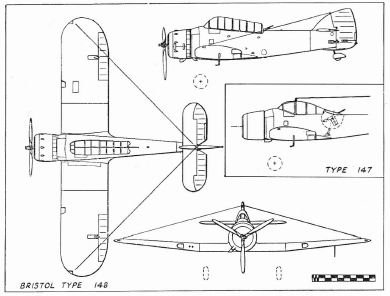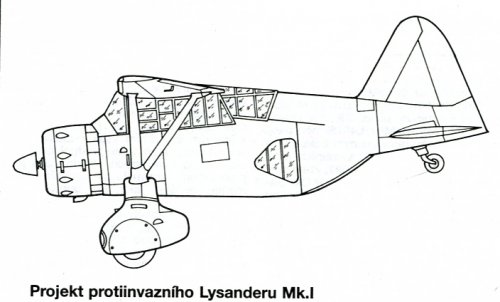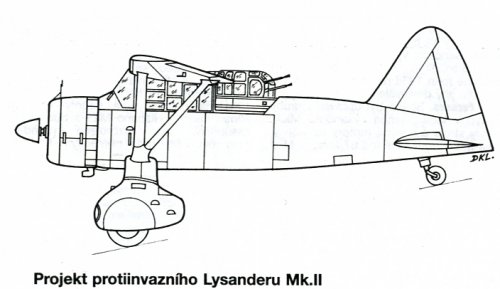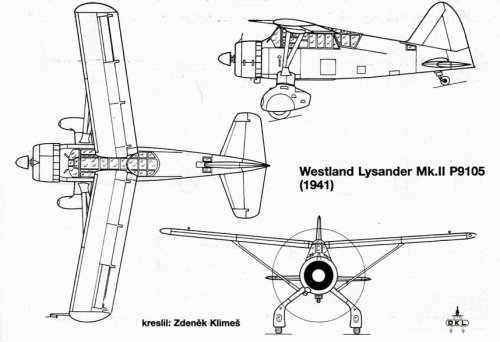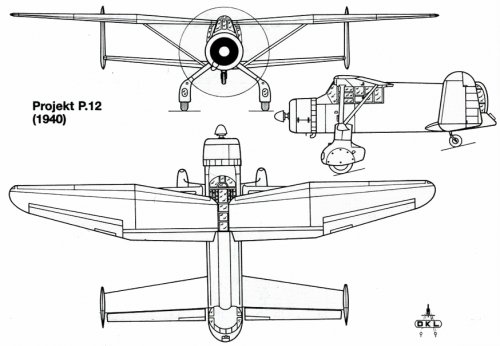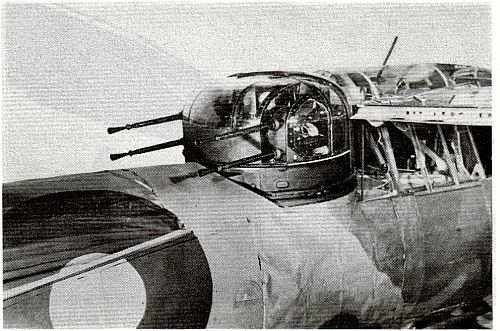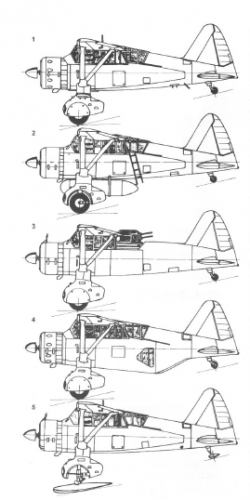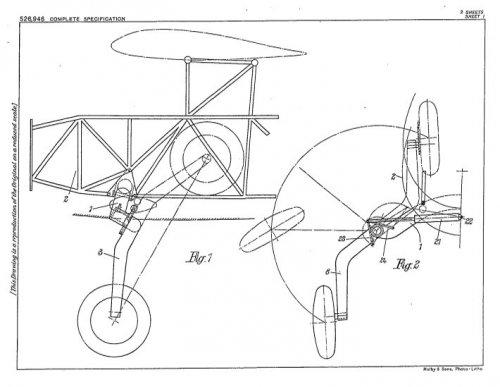You are using an out of date browser. It may not display this or other websites correctly.
You should upgrade or use an alternative browser.
You should upgrade or use an alternative browser.
A.39/34 Westland Lysander
- Thread starter PMN1
- Start date
From Air Britain British Aircraft Specifications File. Mostly details of Lysander.
A.39/34 asked for a monoplane to OR.18 to fulfil an "artillery spotting and reconnaissance role over a wide speed range and a variety of duties."
Bristol 148 based on Type 146 to F5/34: two prototypes built. Brief details and a half page picture. One with 840hp Mercury, then Perseus; other with 1058hp Taurus. "Performed well in Squadron handling trials - speed range 62 - 255mph. "
Avro 670 design; Boulton Paul P.81 design; a Fairey design study; a Hawker design 'no details now avaialble'. No more details of these in the Specs File.
Serials allocated to Cierva Gyroplane, but cancelled.
A.39/34 asked for a monoplane to OR.18 to fulfil an "artillery spotting and reconnaissance role over a wide speed range and a variety of duties."
Bristol 148 based on Type 146 to F5/34: two prototypes built. Brief details and a half page picture. One with 840hp Mercury, then Perseus; other with 1058hp Taurus. "Performed well in Squadron handling trials - speed range 62 - 255mph. "
Avro 670 design; Boulton Paul P.81 design; a Fairey design study; a Hawker design 'no details now avaialble'. No more details of these in the Specs File.
Serials allocated to Cierva Gyroplane, but cancelled.
hi, info from Westland Aircraft ( Putnam )
Spec A.39/34 called for a two seat army co-operation aircraft
"Hawker submitted a biplane contender"
Bristol Type 148 ruled out of competition in September 1936
Spec A.39/34 called for a two seat army co-operation aircraft
"Hawker submitted a biplane contender"
Bristol Type 148 ruled out of competition in September 1936
Several projects from the magazine "Aero PK Revue" # 42/1995 and the quotation from Fr.K.Mason "The British Bomber since 1914"-PutnamThe Specification attracted design tenders from Bristol (the Type 148), Avro (the Type 670), Hawker (a biplane), and Westland (the P.8).
The Hawker tender was rejected out of hand, and the Avro design was not pursued beyond a preliminary sheme, but prototypes were ordered of both the Bristol 148 and the Westland P.8.
1) Bristol Type 148
2-5)Lysander's... Project P.12 - The original prototype K6127 with a Frazer Nash tail turred and a tandem wing.
Attachments
The one with a ventral gunner was built in prototype form and flown because I remember a picture of it crashed, likely from the Putnam WESTLAND AIRCRAFT SINCE... title. It was known, IIRC, as the "Pregnant Perch" for obvious reasons.
I am not familiar with the swept-forward wing on the Mk.II P9105. Was that flown? It would have certainly provided great visibility.
I am not familiar with the swept-forward wing on the Mk.II P9105. Was that flown? It would have certainly provided great visibility.
- Joined
- 1 May 2007
- Messages
- 2,596
- Reaction score
- 1,965
from 'Flypast' volume 2, which is a collected edition of 'Aircraft in Profile' :-
'Pregnant Perch'
"another anti-invasion experiment was the modification of L4673 to include a ventral gun position (also for beach strafing). As suggested by it's soubriquet, the resulting appearance was grotesque, but the experiment was in fact terminated when L4673 suffered an engine failure, the pilot, George Snarey, escaping unhurt after a difficult uphill crash landing under high tension wires."
'Midships Gun Turret'
"Yet another attempt to to provide extra firepower was the mock-up installation of a four gun poweer-operated turret immediately aft of the wing.As it was considered the wing so restricted the field of fire, this installation is believed not to have been flown before it was abandoned."
'Blackburn-Steiger high lift wing'
"For applied research purposes only, P1905 was fitted with a reduced span wing by Blackburns. Full-span flaps and slats were fitted and lateral control was acheived using wing-tip spoilers. designed about a single wing spar, the wing was swept forward 9 degrees and spanned only 38 feet."
'Tandem Wing Lysander'
"As one of a number of anti-invasion experiments to provide a beach-strafing aircraft, the first prototype Lysander,K6127, was provided with an entirely new rear fuselage, shortened to terminate in a power operated four-gun Boulton Paul turret (only a mock-up was ever carried), and supporting a wide-span tandem wing with large twin fins and rudders. Project design work was undertaken at Yeovil early in 1940 but detail work and construction was transferred to Harringtons, a coach-buider in Hove.
Initial flying was carried out by Harald Penrose who reported thta despite considerable aft movement of the c.g. the aircraft handled extremely well."
[note no mention of Delanne in this account.]
cheers,
Robin.
'Pregnant Perch'
"another anti-invasion experiment was the modification of L4673 to include a ventral gun position (also for beach strafing). As suggested by it's soubriquet, the resulting appearance was grotesque, but the experiment was in fact terminated when L4673 suffered an engine failure, the pilot, George Snarey, escaping unhurt after a difficult uphill crash landing under high tension wires."
'Midships Gun Turret'
"Yet another attempt to to provide extra firepower was the mock-up installation of a four gun poweer-operated turret immediately aft of the wing.As it was considered the wing so restricted the field of fire, this installation is believed not to have been flown before it was abandoned."
'Blackburn-Steiger high lift wing'
"For applied research purposes only, P1905 was fitted with a reduced span wing by Blackburns. Full-span flaps and slats were fitted and lateral control was acheived using wing-tip spoilers. designed about a single wing spar, the wing was swept forward 9 degrees and spanned only 38 feet."
'Tandem Wing Lysander'
"As one of a number of anti-invasion experiments to provide a beach-strafing aircraft, the first prototype Lysander,K6127, was provided with an entirely new rear fuselage, shortened to terminate in a power operated four-gun Boulton Paul turret (only a mock-up was ever carried), and supporting a wide-span tandem wing with large twin fins and rudders. Project design work was undertaken at Yeovil early in 1940 but detail work and construction was transferred to Harringtons, a coach-buider in Hove.
Initial flying was carried out by Harald Penrose who reported thta despite considerable aft movement of the c.g. the aircraft handled extremely well."
[note no mention of Delanne in this account.]
cheers,
Robin.
The Lysander carried light bombs on stub wings, what would be the effect of the Lysanders bombload (500lb?) on their performance if carried by the F5/34 contenders (or F37/35), possibly with reduced guns/cannon?
The Lysander was about the same size overall as the P.9 and ultimately the Whirlwind, what if Westland got imaginative with the spec and offered something like an eralier equivalent to the P.9/Whirlwind but with two seat or one of the other contenders offered a fast two seat twin-engined aircraft??
- Joined
- 22 April 2012
- Messages
- 2,258
- Reaction score
- 2,309
- Joined
- 1 May 2007
- Messages
- 2,596
- Reaction score
- 1,965
Pictures from the reference mentioned in #5...
cheers,
Robin.
cheers,
Robin.
Attachments
-
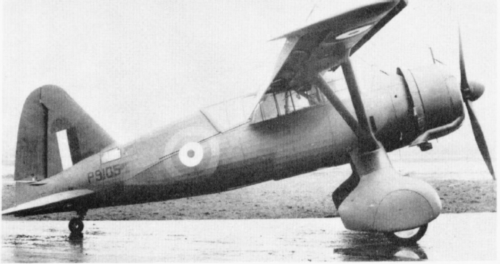 blackburn-steiger high-lift wing.png389.2 KB · Views: 183
blackburn-steiger high-lift wing.png389.2 KB · Views: 183 -
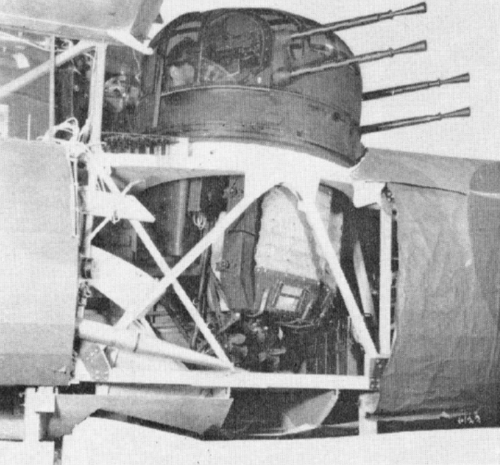 midships gun turret mockup.png795.1 KB · Views: 173
midships gun turret mockup.png795.1 KB · Views: 173 -
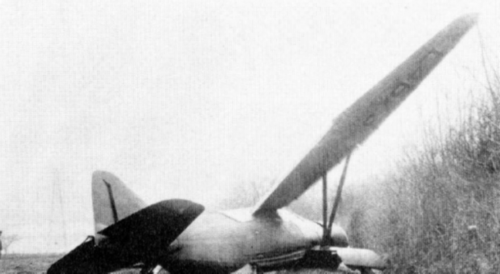 the end of the pregnant perch.png302.5 KB · Views: 168
the end of the pregnant perch.png302.5 KB · Views: 168 -
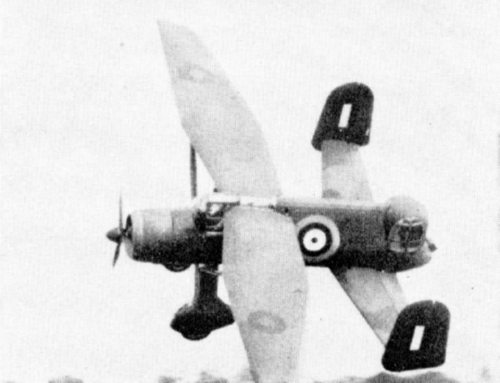 tandem wing lysander #4.png455.5 KB · Views: 165
tandem wing lysander #4.png455.5 KB · Views: 165 -
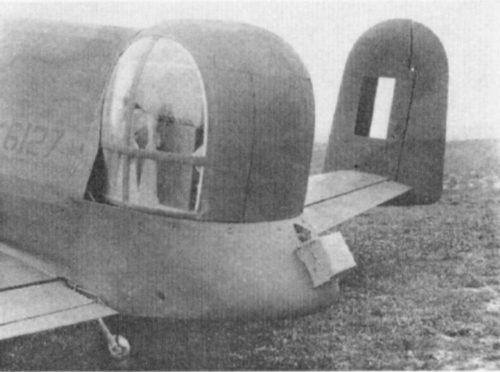 tandem wing lysander #3.png495.2 KB · Views: 167
tandem wing lysander #3.png495.2 KB · Views: 167 -
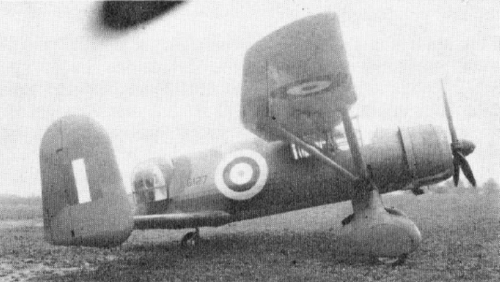 tandem wing lysander #2.png456.9 KB · Views: 169
tandem wing lysander #2.png456.9 KB · Views: 169 -
 tandem wing lysander #1.png266.5 KB · Views: 197
tandem wing lysander #1.png266.5 KB · Views: 197
- Joined
- 1 May 2007
- Messages
- 2,596
- Reaction score
- 1,965
Star, as is mentioned in #5, 'For applied research purposes only,', I think the idea was to test technologies for future aircraft, rather than upgrade the Lysander itself. As the standard Lysander already had amazing low-speed abilities, it was the obvious choice for the test-bed.
cheers,
Robin.
cheers,
Robin.
- Joined
- 26 May 2006
- Messages
- 34,911
- Reaction score
- 15,786
Hot Breath
I really should change my personal text
- Joined
- 11 March 2014
- Messages
- 196
- Reaction score
- 12
I wonder if the RN ever showed any interest in the Lysander? Its amazing STOL performance would have made it ideal as a light spotting aircraft, I'd have thought. It could have taken off and landed on a small platform on even quite small ships if underway.
Kevin Renner
ACCESS: Confidential
- Joined
- 6 November 2007
- Messages
- 102
- Reaction score
- 12
I was thinking the same thing. Not invented here perhaps. It might of made a decent anti-sub a/c for convoy escorts.
- Joined
- 19 October 2012
- Messages
- 1,984
- Reaction score
- 1,941
From patent GB526946, applied for in early 1939, it seems that Westland were considering a retractable undercarriage for the Lysander (the drawing definitely shows the Lysander's structure). The wheels would have been housed in the fuselage alongside the fuel tank.
(Davenport's original sketch in 1935 is said to have featured undercarriage that retracted into stub wings)
(Davenport's original sketch in 1935 is said to have featured undercarriage that retracted into stub wings)
Attachments
Further to the last post:


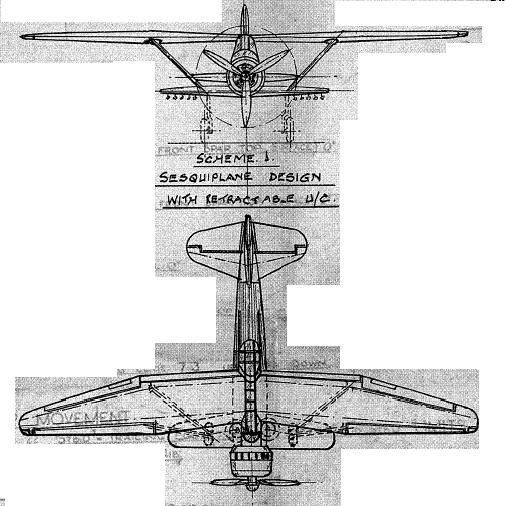
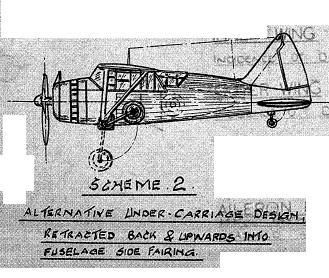
- Joined
- 19 October 2012
- Messages
- 1,984
- Reaction score
- 1,941
Thanks 
- Joined
- 9 October 2009
- Messages
- 21,976
- Reaction score
- 13,638
- Joined
- 11 March 2012
- Messages
- 3,249
- Reaction score
- 3,179
During early 1940, Westland's Chief Designer Petter and test pilot Penrose flew to Paris to visit Delanne, who was working on a light-weight aerodynamic prototype of a tandem wing at the Arsenal factory. Delanne flew the light-weight model a bit and had almost completed a full-scale, tandem-wing, two-seater fighter prototype when Germany invaded. Notsis completed the Delanne Arsenal prototype and test flew it in France before ferrying it to Germany for further testing.
I question the logic of rear-facing guns to strafe beaches. Because he lacks forward visibility, the gunner only has a few seconds to acquire and fire on targets. OTOH The pilot has plenty of time to acquire, aim and fire at targets with his fixed, forward-firing guns.
In the end, I think that the Delanne Lysander was more of a what-if project to test the Delanne tandem-wing configuration. The turret was just a convenient balance weight.
I wonder if a Delanne Lysander spy-carrier might have been quicker to load than the slightly modified Lysanders that supported French resistance fighters. Removing the turret would allow rapid unloading of bulky supplies and rapid loading of stretchers.
I question the logic of rear-facing guns to strafe beaches. Because he lacks forward visibility, the gunner only has a few seconds to acquire and fire on targets. OTOH The pilot has plenty of time to acquire, aim and fire at targets with his fixed, forward-firing guns.
In the end, I think that the Delanne Lysander was more of a what-if project to test the Delanne tandem-wing configuration. The turret was just a convenient balance weight.
I wonder if a Delanne Lysander spy-carrier might have been quicker to load than the slightly modified Lysanders that supported French resistance fighters. Removing the turret would allow rapid unloading of bulky supplies and rapid loading of stretchers.
Temistocle
ACCESS: Secret
- Joined
- 9 December 2009
- Messages
- 246
- Reaction score
- 505
Triggered by another thread, I found this image of the Pregnant Perch mockup, with the ventral gun installation:
Pregnant Perch mockup
Pregnant Perch mockup
maxmwill
I really should change my personal text
- Joined
- 29 October 2011
- Messages
- 60
- Reaction score
- 21
I've been wondering that, and since a Lysander in 1/32 scale is nice(I'm old and 1/72 can be problematic), and since there are plenty of the Matchbox kits available, and it really is a nice kit, although a bit sparse, although that's the vintage not the quality.During early 1940, Westland's Chief Designer Petter and test pilot Penrose flew to Paris to visit Delanne, who was working on a light-weight aerodynamic prototype of a tandem wing at the Arsenal factory. Delanne flew the light-weight model a bit and had almost completed a full-scale, tandem-wing, two-seater fighter prototype when Germany invaded. Notsis completed the Delanne Arsenal prototype and test flew it in France before ferrying it to Germany for further testing.
I question the logic of rear-facing guns to strafe beaches. Because he lacks forward visibility, the gunner only has a few seconds to acquire and fire on targets. OTOH The pilot has plenty of time to acquire, aim and fire at targets with his fixed, forward-firing guns.
In the end, I think that the Delanne Lysander was more of a what-if project to test the Delanne tandem-wing configuration. The turret was just a convenient balance weight.
I wonder if a Delanne Lysander spy-carrier might have been quicker to load than the slightly modified Lysanders that supported French resistance fighters. Removing the turret would allow rapid unloading of bulky supplies and rapid loading of stretchers.
And I don't as gifted with a vacuform 1/72 Wendover conversion kit, which would provide a pattern.
And an espionage variant would be great to what if. And supposedly, there are drawings of a float variant.
Amphib EDO floats anyone?
avion ancien
The accidental peasant!
- Joined
- 6 March 2013
- Messages
- 371
- Reaction score
- 253
'Tandem Wing Lysander'
"..... Project design work was undertaken at Yeovil early in 1940 but detail work and construction was transferred to Harringtons, a coach-buider in Hove.
Can anyone tell me exactly what work was undertaken by Harringtons in connection with the P.12 project? I understand that the project comprised the design and construction of an entirely new rear fuselage, aft gun turret and rear wing with outboard fins and rudders. The above quotation suggests that Harringtons played a major rôle - which would seem surprising as I'm unaware of Harringtons having had any prior involvement in or experience of this sort of work during or before the war - but other sources say that Harringtons' involvement was limited to the construction of the rear wing, fins and rudders.
Last edited:
- Joined
- 31 July 2013
- Messages
- 571
- Reaction score
- 1,182
Looking at what I can find about Harringtons thus far, they were a coachbuilding company both pre and post war. They were involved in Lysander production, so I would take it they were given the task of the P.12 project with the experience they had of the type, plus given their engineering skills from their pre war work.
avion ancien
The accidental peasant!
- Joined
- 6 March 2013
- Messages
- 371
- Reaction score
- 253
Thank you. I wasn't hitherto aware of Harrington's aeronautical war work. The first mention of this that I found is in a November 1995 Classic & Sports Car magazine article on the Harrington Alpine, which mentions that:
and then in another article, in the June 2020 issue of Old Glory magazine, which says that:
and finally in an article on themotorists.com.au website, which contends that:
but I haven't found any aeronautical source which confirms this. Does anyone know of one?
During the war Harrington built Mosquito and Lysander aircraft and maintained the aeronautical connection well into the post-war period, supplying components for the Viscount
and then in another article, in the June 2020 issue of Old Glory magazine, which says that:
During the Second World War ..... [Harrington] made airframe components, believed to have been for the famous Westland Lysander aircraft .....
and finally in an article on themotorists.com.au website, which contends that:
..... Harrington’s expertise was adapted in the construction of the airframes for the Westland Lysander aircraft
but I haven't found any aeronautical source which confirms this. Does anyone know of one?
Last edited:
- Joined
- 6 September 2006
- Messages
- 4,834
- Reaction score
- 9,460
Oddly Grace's Guide has almost nothing on Thomas Harrington & Sons, surprising given its coachbuilding successes (one Harrington Legionnaire coach literal cliffhanger becoming a screen legend!).
The Wiki article quotes Platt & Lukowski, The Harrington Grenadier and Cavalier, (1991) in saying construction of the Lysander gave Harrington's workforce new skills in jig-building using lightweight alloy sections and extrusions. So it sounds like they were doing fuselage work.
But there is a dedicated website on the history of the company here: http://www.thcoachwork.co.uk/entrance.html
It's not been updated for a decade though and what is does say about the aircraft work is pretty scanty of detail;
The Wiki article quotes Platt & Lukowski, The Harrington Grenadier and Cavalier, (1991) in saying construction of the Lysander gave Harrington's workforce new skills in jig-building using lightweight alloy sections and extrusions. So it sounds like they were doing fuselage work.
But there is a dedicated website on the history of the company here: http://www.thcoachwork.co.uk/entrance.html
It's not been updated for a decade though and what is does say about the aircraft work is pretty scanty of detail;
During the Second World War, work other than war effort stopped completely. The very few passenger vehicles that emerged from the works may be presumed to be either repair of damaged vehicles or for supply to the armed forces. Harrington certainly constructed a number of special vehicles for Army, Navy and RAF and maintained others. Part of the works was converted to manufacture air frame components. It is believed that this was primarily for the Westland Lysander aircraft, famed for its ability to land and take off in a small area and much used in contacts with the French Resistance. Another activity where Harringtons were proud to contribute was the production of prototype aircraft components and this eventually became a major part of war work. The techniques such as light alloy construction and jig manufacture were incorporated into post-war coach production, thus ensuring quick and accurate assembly. Prototype work such as this continued even after the war and through the fifties.
avion ancien
The accidental peasant!
- Joined
- 6 March 2013
- Messages
- 371
- Reaction score
- 253
Thank you, Hood. The impression I have, from what is written in these various sources, is that it is less likely that Harrington undertook the design and constrction of the P.12 and more likely that it made and supplied component parts for it to Westland designs. Thus to return to post #25, I have to prefer sources say that Harrington's involvement was limited to the construction of the rear wing, fins and rudders.
Similar threads
-
U.S.Navy-BuAer Specification SD 112.14 (1938)
- Started by lark
- Replies: 9
-
-
-
-
Archives contact at Agusta Westland?
- Started by cluttonfred
- Replies: 3

